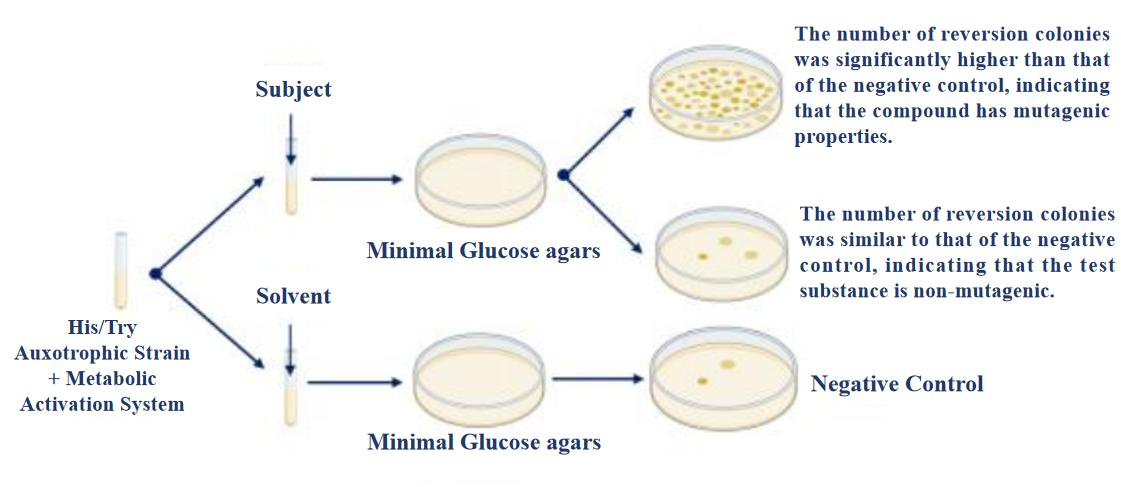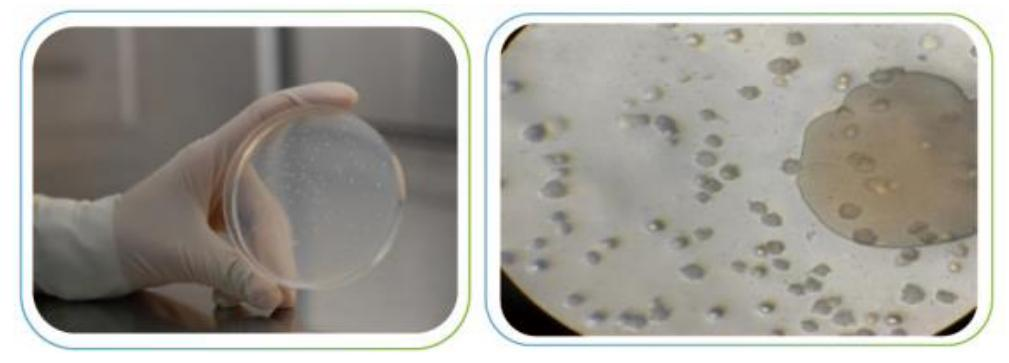The Ames test is a co-culture of Salmonella typhimurium or Escherichia coli (E. coli) defective strains with the test compound. If the compound is mutagenic, the defective strains will undergo a revertant mutation and re-mutate to the wild-type, which is suitable for detecting the ability of the test substance to induce point mutations and code-shift mutations. Wild-type strains synthesize histidine/tryptophan and can grow on low-nutrient media and form visible colonies. Nutrient-deficient strains do not synthesize histidine/tryptophan, and only a few spontaneously reversion mutant bacteria can grow into visible colonies on histidine- or tryptophan-deficient media, while most of them only form microcolonies (i.e., background bacterial tundra), which can be used to evaluate the mutagenicity of the test material. The mutagenicity of the test material can be evaluated accordingly.



